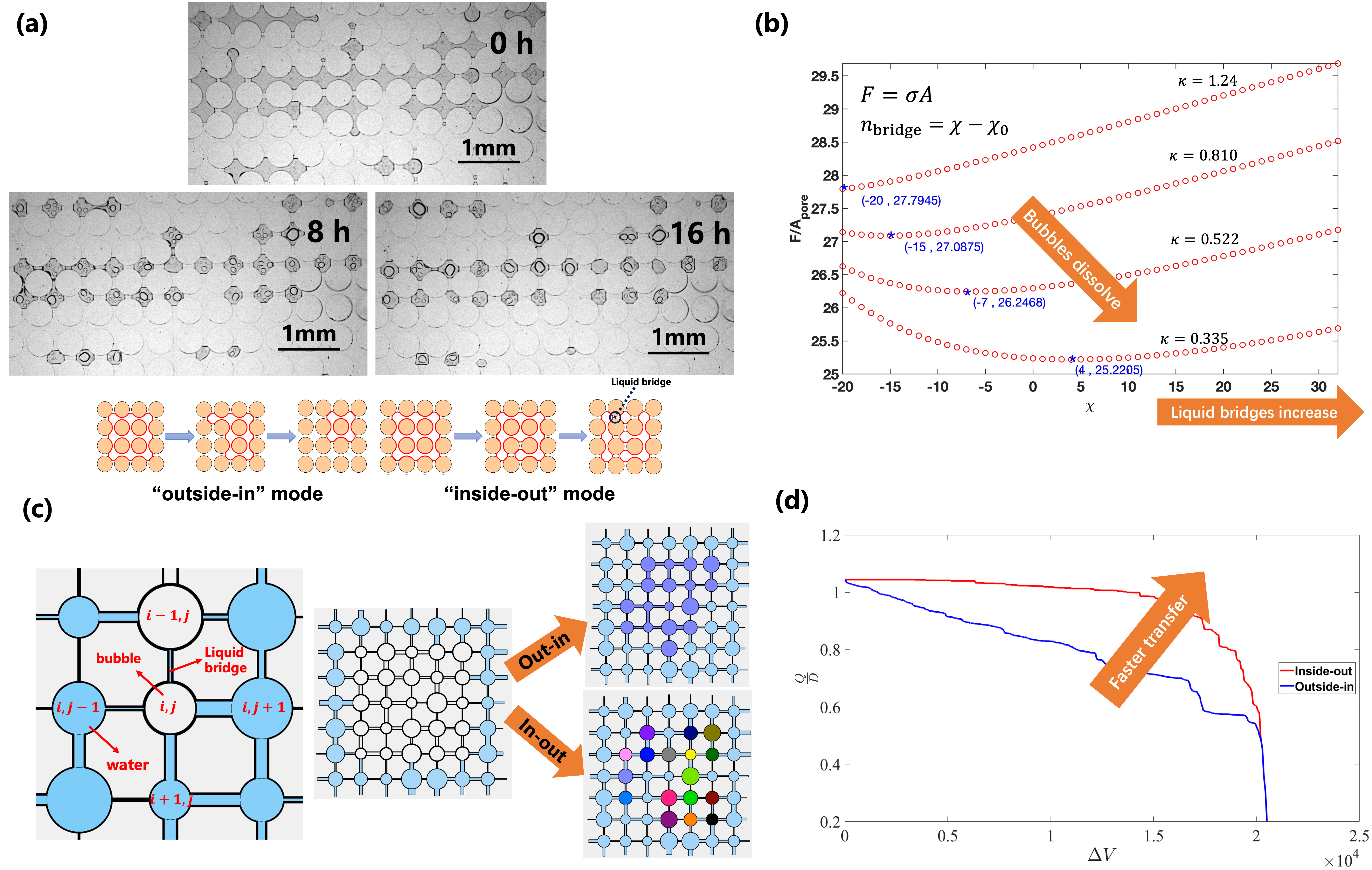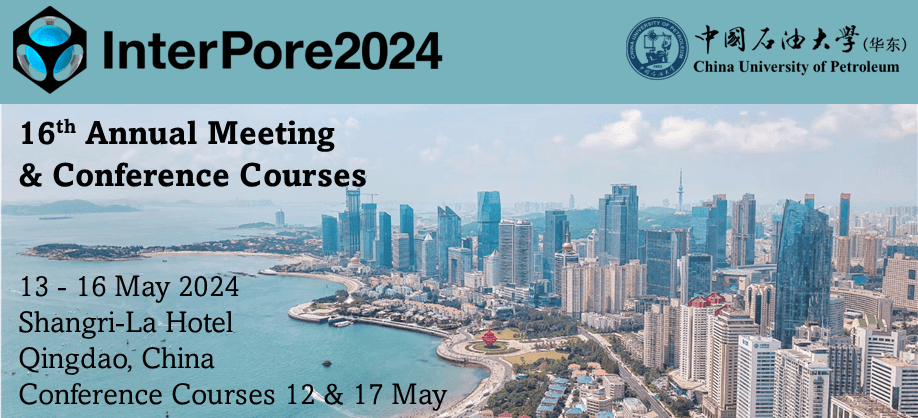Speaker
Description
After injecting $\rm{CO_2}$ into subsurface porous media for sequestration, $\rm{CO_2}$ may be trapped as continuous gas cap (structural trapping) 1 or dispersed ganglia (capillary trapping) [2]. The former can utilize local pore space more efficiently, while the latter has been well-recognized to be hydrodynamically more stable. After thousands of years, both gas cap and gas ganglia dissolves into formation fluid. However, the evolution of ganglia and gas cap during slow dissolution in porous media is still largely unexplored.
We conduct experiments on slow dissolution of gas in porous media into surrounding liquid. Surprisingly, the ganglia dissolution is not in classic “outside-in” mode that the ganglia interface flinches inward gradually, but in a counterintuitive “inside-out” mode: liquid bridges spontaneously emerge at the throats after several hours and finally fragment the ganglia into pieces. One example in the micromodel visualized experiment is shown in Fig. 1a. Intriguingly, it suggests a probability that structural trapping can spontaneously transform into capillary trapping during mild dissolution, which helps to achieve stable $\rm{CO_2}$ storage without sacrificing space utilization at the very beginning.
We hypothesize that this counterintuitive phenomenon, which emerges when large ganglia slowly dissolve, is driven by the optimization of free energy, i.e., forming liquid bridges is a thermodynamically more optimum pathway than outside-in dissolution. To prove this hypothesis, we first employ a conceptual 2-D theoretical model [3] to analyze thermodynamic states of ganglia in homogeneous porous media. We confirm that in porous media with narrow throats, dissolving bubble by forming liquid bridge is of lower free energy than by outer boundary flinch [Fig 1.b]. Kinetically, the liquid bridge can form via 1) film flow when liquid is completely wetting, and 2) capillary condensation of connate water via Ouzo effects when the liquid is only partially-wetting.
We further develop quasi-static pore network modeling (PNM) algorithm to extend the experimental discovery and theoretical interpretation into 3D and heterogeneous media. Pore bodies and pore throats are depicted as spheres and cylindrical tubes for simplicity. This PNM successfully identifies the thermodynamically optimum pathway of ganglia dissolution, and quantifies the quasi-steady state mass transfer coefficient between two phases [Fig 1.c]. We show that “inside-out dissolution” path results in larger mass transfer coefficient than “outside-in” path [Fig 1.d], which may facilitate dissolution and mineral trapping in subsequent stages.
In summary, we reveal a novel mechanism in $\rm{CO_2}$ subsurface sequestration that continuous gas and large ganglia may spontaneously break into pieces via forming liquid bridges during dissolution. This “inside-out” pathway is thermodynamically more favored. It provides a new perspective to estimate sequestration efficiency and safety.

Figure 1 (a) Snapshots of experiment (above) and diagrams for 2 dissolution modes (below). (b) Free energy of ganglia with different curvatures changes with increasement of liquid bridges. (c) Diagrams for PNM and evolution of bubbles in two modes. Light blue represents water while the other different colors represent different bubble domains internally continuous but mutually isolated for liquid bridges. (d) Mass transfer rate changes through dissolution in different pathways.
| References | [1]. Bachu, S., et al., CO2 storage capacity estimation: Methodology and gaps. International Journal of Greenhouse Gas Control, 2007. 1(4): p. 430-443. [2]. Dance, T. and L. Paterson, Observations of carbon dioxide saturation distribution and residual trapping using core analysis and repeat pulsed-neutron logging at the CO2CRC Otway site. International Journal of Greenhouse Gas Control, 2016. 47: p. 210-220. [3]. Wang, C., Y. Mehmani, and K. Xu, Capillary equilibrium of bubbles in porous media. Proc. Natl. Acad. Sci. U.S.A., 2021. 118(17). |
|---|---|
| Country | China |
| Conference Proceedings | I am not interested in having my paper published in the proceedings |
| Student Awards | I would like to submit this presentation into the InterPore Journal Student Paper Award. |
| Acceptance of the Terms & Conditions | Click here to agree |




.jpg)
